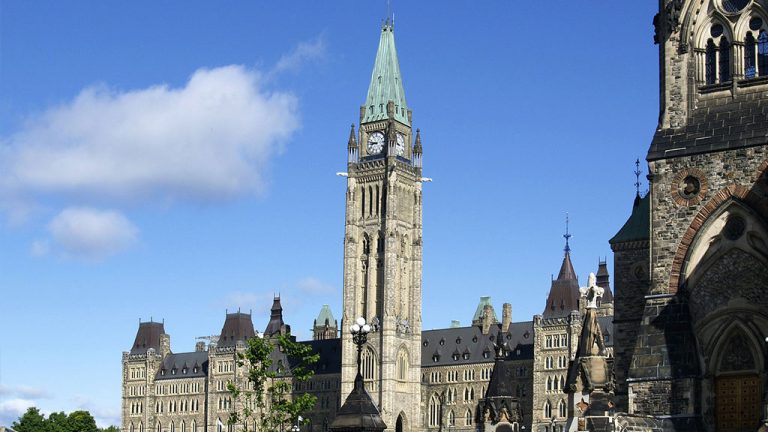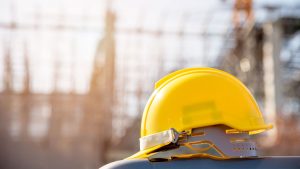A made-in-Canada, single-use, biodegradable face mask, used to slow the spread of COVID-19, is on the way but its delivery date will be no sooner than late spring 2021.
“We are hoping to get our Phase 2 work done and you might see them in April 2021 at the earliest,” said industry sector leader Doug Singbeil for FPInnovations, a forest research body looking to bringing the first Canadian bio-mask to the market.
FP Innovations is one of two Canadian research groups working with Canadian forest fibre to create a face mask that will degrade naturally. FPInnovations’ Montreal laboratory and the University of B.C.’s BioProducts Institute (BPI) are working independently on two different versions of a biodegradable, forest-fibre mask.
The use of Canadian fibre compostable mask will also provide a Canadian solution to its part in a worldwide litter problem occurring as tons of discarded masks are causing environmental problems in cities and oceans, according to environmental groups.
Worldwide, an estimated 129 billion disposable face masks and 65 billion gloves are used every month, according to a study in the journal Environmental Science and Technology. Most single-use protective gear is made from plastics including polypropylene, polythene and vinyl.
“You only have to look at the ground to see the discarded mask and recognize that those are not going to go away soon,” said Singbeil as plastic takes hundreds of years to decompose.
Singbeil said FPInnovations began researching a compostable mask as an open-door for new uses of Canadian wood fibre. FPInnovations received a $1.3 million federal grant and sprinted through an eight-week Phase 1, where researchers developed and proved out a central-layer filter made from wood fibres. The wood fibre filter could be effectively used in a three-ply mask and its’ filtration surpassed what is available in the market, he said. The central filtration layer rests between an outside and inside face of the three-ply mask.
“In Phase 2, we have three objectives,” said Singbeil, as researchers work over the next half year.
The first, he said, was making a product that could easily integrate into a commercial partner’s manufacturing facilities and ensuring a supply chain of materials. The second objective was to explore a full range of compostable materials that could serve to facilitate a 100 percent biodegradable mask (outer and inner layers) and the last consideration was reaching for that higher standard that is required for the medical mask market.
FPInnovations is moving towards achieving the high standard seen in the N95 mask but not replicating the N95 mask. “They (researchers) have the filtration very close,” he said, adding it is a challenge as “you want to get the highest degree of filtration that you can and still be able to breathe comfortably,” he said.
All masks, including face coverings made of cloth, that make medical claims are regulated under Health Canada and must meet specific international standards for Class I medical devices, such as ASTM F2100. Health Canada’s website said these include bacterial filtration effectiveness, and may include specifications for particle filtration efficiency, flammability and fluid resistance.
UBC researchers, Johan Foster, Ph.D. and Orlando Rojas Ph.D. identified the need for a biodegradable mask only weeks into the pandemic. “We saw mask and gloves scattered around the campus”, said Foster, an associate professor in UBC’s Department of Chemical and Biological Engineering. The pair thought the solution rested in a wood fibre mask. “There was a huge demand for masks and we could felt we could make a mask from locally sourced materials.”
Originally the researchers looked at N95 masks using wood fibres, but it soon become apparent that the standards would not lend itself to a wood fibre mask as N95 requires stringent fluid resistance, spark resistance and a very high filtration level reaching near 100 per cent. In contrast, a single-ply cloth mask has only 30 per cent filtration, while general purpose masks (which are not regulated) sold in stores have a variable rating going up to 60 per cent filtration effectiveness.
“We feel we could make a better impact on the commercial market and work towards a medical standard,’ he said. UBC is currently seeking Health Canada approval for its medical masks.
Foster said the researchers are “pushing to get the mask on the market as soon as possible” but he won’t make predictions.
While both research bodies see the biodegradable mask as a response to tons of plastic-coated fibre masks that can’t be recycled or composed, it is also viewed as a readied Canadian response for future pandemics or disease outbreaks. Canada faced a mask shortage both for medical and commercial masks early in the pandemic and has imported large shipments from China.
UBC Researcher Orlando Rojas, scientific director of the university’s BPI and a professor in chemical and biological engineering, chemistry and wood science said he sees more future uses for wood fibre in the making of one-time-use personal protection equipment as a result of the research being done.
“The COVID face mask is just the tip of the market,” said Rojas.











Recent Comments
comments for this post are closed